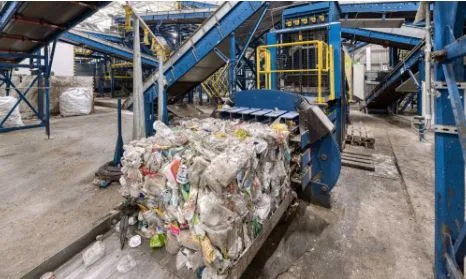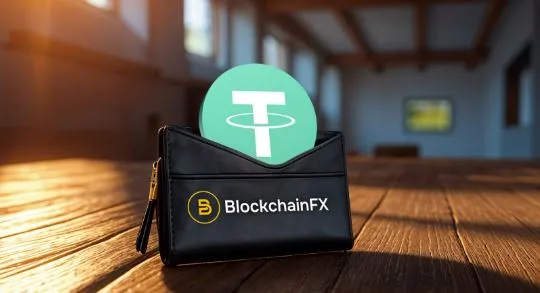The Hidden Costs of Buying Used Trash Compactors – And How to Avoid Them
When it comes to waste management equipment, buying used trash compactors can seem like a savvy financial decision. After all, why pay full price when there are so many trash compactors for sale on the secondary market? However, what appears to be a cost-effective choice upfront can quickly turn into an expensive headache if you’re not careful.
In this article, we’ll break down the hidden costs often overlooked when purchasing used trash compactors and share actionable tips to help you make a smarter investment.
- Initial Savings vs. Long-Term Expense
The Illusion of Savings
Used trash compactors usually come with a much lower price tag than new models. Businesses are often drawn to these options in an effort to reduce capital expenditures. However, the upfront savings can be deceptive. Older machines may be priced attractively, but hidden wear and tear, outdated technology, and lack of warranty support can lead to significant repair or replacement costs down the road.
Long-Term Ownership Costs
In reality, a used compactor might cost more over its lifetime due to:
- Increased energy consumption from older motors
- Frequent part replacements
- Higher maintenance frequency
- Safety concerns requiring retrofits or upgrades
Without knowing the full history of a unit, it’s nearly impossible to estimate the long-term expenses accurately.
- Outdated or Incompatible Technology
Trash compactor technology has evolved. Modern units are more energy-efficient, quieter, and equipped with smarter features like real-time monitoring, safety locks, and automated scheduling. Buying an older model often means missing out on these benefits—and possibly ending up with a machine that isn’t compatible with your existing systems or workflow.
If you’re browsing trash compactors for sale, be sure to compare the specs of used units to current-generation equipment. Many older compactors lack digital controls or connectivity, making them harder to integrate into facility management systems.
- Parts Availability and Repair Costs
Scarcity of Replacement Parts
Manufacturers frequently discontinue older models and their components. When you purchase a used trash compactor, sourcing parts becomes a gamble. Even if you find the right part, it may come with a premium price due to its scarcity.
Higher Labor Costs
Older machines are often unfamiliar to modern technicians. This can lead to:
- Increased labor time for repairs
- Delays in service due to unfamiliarity
- Risk of improper fixes from inexperienced providers
In contrast, new machines come with service plans, manufacturer support, and a wide availability of parts.
- Safety and Compliance Risks
Outdated Safety Features
Used trash compactors may lack modern safety features like emergency shutoffs, safety cages, or motion sensors. These omissions pose a significant risk to operators and could result in costly workplace injuries.
Regulatory Compliance
Workplace safety regulations evolve. A used compactor purchased from a seller outside your jurisdiction may not meet local codes. Non-compliance can lead to:
- Fines and penalties
- Operational shutdowns
- Increased liability in case of accidents
Before purchasing, consult OSHA or your local governing body to ensure the unit complies with all regulations.
- Warranty and Support Gaps
No Manufacturer Warranty
Most used compactors are sold “as-is.” That means:
- No warranty coverage
- No free repairs or part replacements
- No protection against hidden defects
Limited Seller Guarantees
Even reputable resellers typically offer only limited-time warranties—often 30 to 90 days. That leaves you exposed to expensive repairs after a short window.
When exploring trash compactors for sale, consider the value of a full warranty and after-sale support. It might justify paying a bit more for a new or certified refurbished model.
- Inefficiencies and Downtime
Unplanned Maintenance
Used equipment is more prone to breakdowns. Unplanned downtime not only disrupts operations but also increases labor costs, delays waste collection schedules, and risks overflow or sanitation issues.
Reduced Performance
Older trash compactors may not perform at peak efficiency. They might:
- Compact less waste per cycle
- Use more electricity per operation
- Take longer to run
This inefficiency adds to your operating costs and reduces the ROI of your investment.
- Environmental Impact
Higher Carbon Footprint
Aging motors and inefficient hydraulics consume more power and emit more carbon emissions. This runs counter to many businesses’ sustainability goals.
Missed Green Incentives
Modern trash compactors often qualify for energy efficiency incentives or tax breaks—something rarely available for older, used units.
When reviewing trash compactors for sale, remember that a newer model might actually cost less over time when factoring in sustainability incentives and operational efficiency.
- Reputation and Professionalism
Visual Appeal and Brand Image
A worn-out, rusty, or noisy trash compactor doesn’t just pose a functional risk—it can harm your brand’s image. This is especially critical for customer-facing environments like retail centers, restaurants, or office buildings.
Investing in newer or well-maintained equipment demonstrates your commitment to safety, cleanliness, and professionalism.
How to Avoid the Hidden Costs: A Buyer’s Checklist
Here’s how to sidestep the most common pitfalls when buying used trash compactors:
- Buy from Certified Dealers
Always purchase from a reputable seller who specializes in waste management equipment and offers service records, warranties, and return policies.
- Request a Full Inspection
Ask for:
- Maintenance records
- Usage hours
- Load history
- Any previous damage or part replacements
Have a technician inspect the unit before finalizing the purchase.
- Check Compliance and Safety Standards
Ensure the compactor meets local safety codes and has up-to-date safety features.
- Estimate Total Cost of Ownership (TCO)
Factor in:
- Energy usage
- Anticipated repairs
- Replacement parts availability
- Downtime risks
Compare this to the TCO of a new machine to ensure you’re truly saving money.
- Consider Refurbished Over “Used”
Refurbished compactors are often reconditioned to near-new standards, come with warranties, and are supported by the manufacturer. They offer a safer middle ground between new and used.
Buy Smart, Not Just Cheap
While the used market is filled with trash compactors for sale at seemingly great prices, the hidden costs can add up quickly. From safety concerns and regulatory issues to inefficiencies and long-term repairs, buying used equipment requires due diligence.
By evaluating total ownership costs, verifying compliance, and sourcing from reputable dealers, you can protect your investment and ensure your trash compactor supports your business—not burdens it.
If you’re in the market, don’t just search for trash compactors for sale—search for value, reliability, and long-term performance. Sometimes, spending a little more upfront is the smartest choice in the end.






